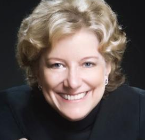
Blanketing BART stations in San Francisco since mid-June are public service announcements urging passers-by to use their cellphones to "drill the oil industry." Another Twitter campaign? Guess again. Think
Foursquare, the new mobile social network, which a number of nonprofits are using to drum up some money and a crowd -- online and off.
Earthjustice, a nonprofit public interest law firm in the Bay Area, is asking BART riders to "check in" with them on Foursquare. For every check-in, one of Earthjustice's major donors is pledging $10 to help the nonprofit's attorneys fight environmental pollution. So far, so good. The campaign has raised over $10,000 for the cause, says marketing manager Ray Wan, and has brought a crowd of people to the Earthjustice Web site that didn't know about the group previously. "We're getting some amazing buzz from this," Wan says. "It's an easy way to get people involved in helping us to fight for the environment."
It's not the first nonprofit to experiment with Foursquare. For the uninitiated,
Foursquare is a location awareness application that people use on their phones to check in at various locations throughout major cities all over the world. People who check in this way earn points, join friends, and unlock goodies as they go. The person with the most check-ins at one place become that venue's "mayor." Businesses already using Foursquare to lure new customers to their venues are awarding those who come in the most often with discounts and free goods. Nonprofits are still experimenting.
At the
Brooklyn Museum, chief technology officer and social media maven
Shelley Bernstein has begun using Foursquare to boost the personal dialogue between the museum's staff and the people who visit the museum, live in the neighborhood, and patronize the site. On Foursquare, people leave "tips" at venues they like -- bits of advice so that other people know what to expect when they go there. "Many of our staff are essentially local experts, so we've queried them to compile tips to the wealth of options that exist in our local neighborhood, Prospect Heights," Bernstein says on the museum's Foursquare page. "So now, as people explore our area, the Brooklyn Museum staff help them along in their journey, pointing out the joys of pancakes at
Tom's Restaurant or the killer wine selection at
Abigail's."
Bernstein is working to establish venue pages for the museum's exhibitions and permanent collections. "People could check in at the galleries they visit -- American Identities, The Dinner Party, Egypt Reborn, etc. and become the mayor of not just the museum but of their favorite installation within the greater whole." The goal, of course, is to get more people to visit the museum -- via a Brooklyn Museum "badge" that gets unlocked after a certain number of visits, rewarding people for multiple visits. Writes Bernstein: "As simply as I can put this, Foursquare is about place and identifying yourself through that. It is a celebration of the visitor -- the people who crossed the river, who made it in the door and decided to identify themselves with us, right here."
Another nonprofit, Naperville, Ill.-based
Big Love Little Hearts, which works to help children born with congenital heart defects, also has been experimenting successfully with Foursquare. Last April, the nonprofit's volunteers were asked to add the following "tip" to 600 Foursquare locations: "1 in 100 children are born w/ a heart defect.
Pulse-Ox screening saves lives -- you can too! Check in with the hashtag #100X100." Organizers embedded a link in that "tip" on Foursquare that drove people to the nonprofit's Web site.
Seven hours into the campaign, a donor volunteered to donate $1 for every person who checked in. Within 12 hours into the campaign, the
hashtag had been used 11,703 times, and the donor was so impressed, she ended up giving the nonprofit $25,000. The nonprofit used Foursquare again as part of a campaign to get supporters to check in (or contact) their Illinois lawmakers to push for legislation to help people with congenital heart defects. "And one last nugget," says chief organizer Estrella Rosenberg, "is that this was all free."
How is your nonprofit or social enterprise using Foursquare to raise awareness, boost patronage, or raise money for a cause? Let us hear form you about what works and what doesn't so far.
-- Marcia Stepanek
(Illustration: istock.com)
Labels: big love little hearts, Brooklyn Museum of Art, earth justice, foursquare, marcia stepanek, shelley bernstein, social activism, social media, social networking


0 Comments:
Post a Comment
Subscribe to Post Comments [Atom]
<< Home